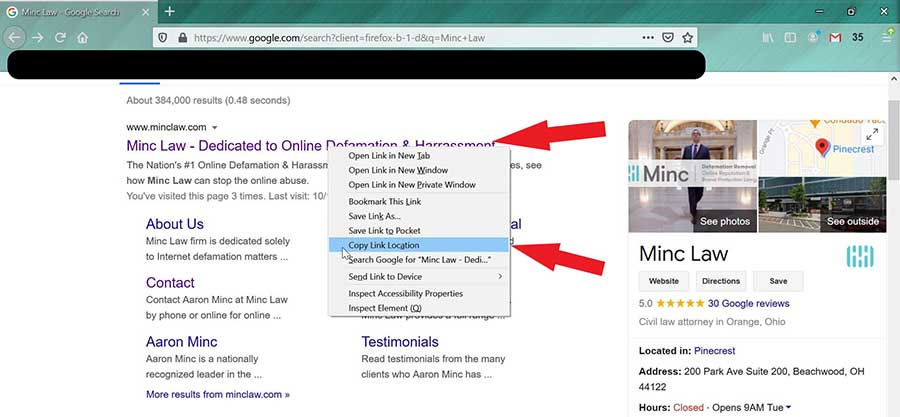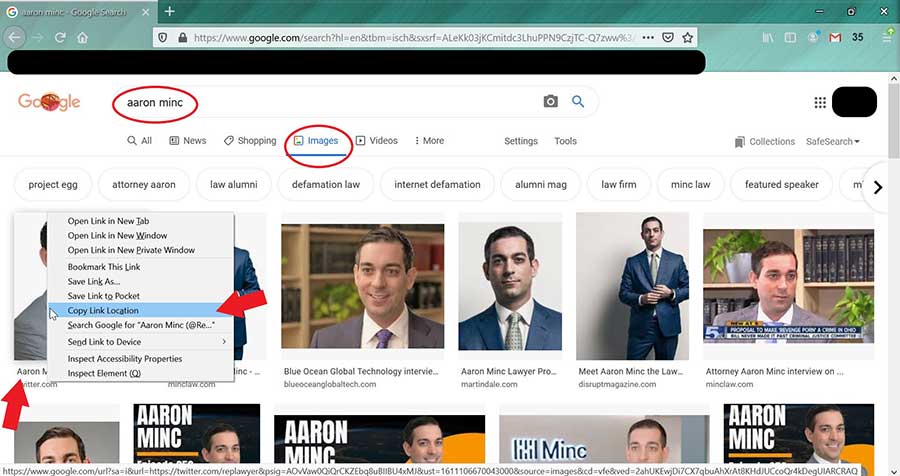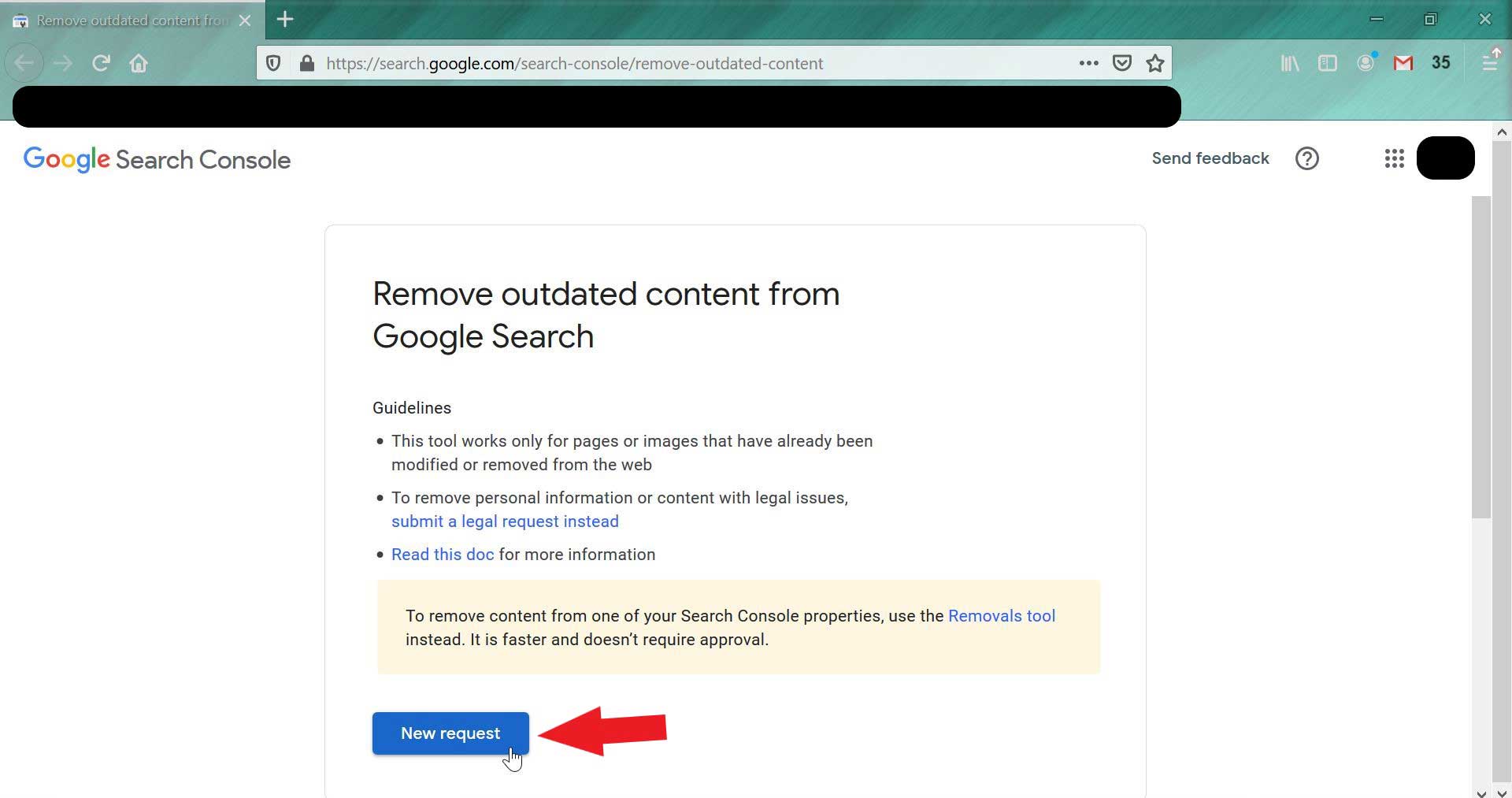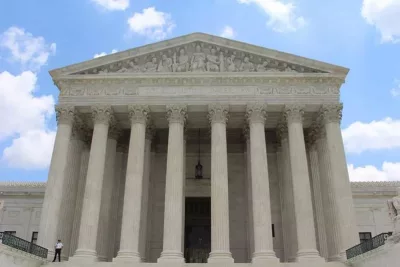
How to Remove Defamatory Content & Search Results From Google
This page has been peer-reviewed, fact-checked, and edited by qualified attorneys to ensure substantive accuracy and coverage.
Finding defamatory or unlawful content in Google’s search results can be embarrassing (at best) and downright harmful (at worst). The good news is you may have some options to remove defamatory content from Google.
To remove defamatory content from Google, you can:
- Make the unwanted content less visible by creating content that reflects your personal “brand.” By creating carefully-tailored social media accounts, personal blogs, and websites you can move negative content off the first page of your search results – where people are less likely to search. You can also set personal social media accounts to “private” to prevent the public from seeing content you would rather share with your inner circle only.
- You can flag content that violates the law or Google’s Terms of Service. Google will typically remove content like non-consensual explicit images, copyrighted material or personal information (like financial or medical data) without the need for a court order.
- You can file a defamation lawsuit and obtain a court order requiring removal.
At Minc Law, we have extensive experience removing defamatory content from Google. Every case is different and may require a slightly different strategy. Some methods of content removal are free and easy (like flagging content) while others (obtaining a court order) can be much more challenging.
In this article, we will explain how Google works as well as the importance of monitoring and protecting your online reputation. We then examine the types of online content you control, and those over which you have little control. Finally, we dive into actionable steps to remove defamatory content from Google and explain some of the ways an internet defamation attorney may be able to assist.
With a team of experienced attorneys, we will fight for the closure you deserve. Take back control today.Don't suffer in silence.
Basics: What You Need to Know About Google & Removing Defamatory Content
Google is, without a doubt, the most popular search engine in the world. Without thinking twice, most of us turn to Google multiple times a day to look up everything from the local weather to the take-out menu at our favorite restaurant. But Google’s popularity comes with one frustrating feature: as easy as it is to find the information we want; others can find information about us just as easily.
With Google’s integrated network of backlinks, most of us can find a website (or other information) without knowing a website’s specific URL. It is important to remember that Google does not actually host content, it is just a search engine that takes you to the source of content and information.
In fact, before developers Larry Page and Sergey Brin landed on the name, “Google,” they considered calling the program “BackRub” because it analyzed the web’s backlinks.
Since 1996, Google has fulfilled their mission of organizing the world’s information and making it universally accessible and useful. In the 25 years since its creation, it has become an ubiquitous component of modern life.
How Does Google Work?
Google has a large index of keywords that help determine search results. What makes Google unique (and sets it apart from other search engines) is how it ranks its results. Google’s algorithm, called PageRank, assigns each web page a relevancy score.
The PageRank relevancy score depends on a few factors:
- The frequency and location of keywords in the web page,
- How long the web page has existed, and
- The number of other web pages that link to the page in question
Using PageRank, Google crawls thousands (or more) web pages with information pertinent to your search query. You can think of Google as a library with the largest virtual card catalog in existence – a vast index of information to guide you to the right resource.
Say you Googled “How to remove search results from Google” and were directed to this page. You may have never heard of our law office before (and you might even be located on the other side of the world). Yet, Google produced a series of results based on the words used in your search query. In less than a second, Google’s algorithms sorted through billions of web pages in the search index, using PageRank, and provided you with the most relevant results.
Why Should I Worry About Defamation Appearing in Google’s Search Results?
While Google can be a miraculous tool, like all technology, it comes with its drawbacks as well. 94% of internet searches begin with Google and most people Google at least one thing a day. We even use the phrase, “Google it” in our everyday vernacular.
Google has become so popular in modern life that it is worthwhile to pay attention to what is showing up in our own search results. Chances are, at some point, people will use Google to find information about you.
If you have a business, you likely have a Google Review Page (guide: How to Remove a Google Review) even if you have never claimed it. You can also find a wealth of information about individuals through Google’s search features as well. For better or worse, the results that appear on the first page of Google’s search results under your name or your business name influence how others view you or your company.
Video: How to Remove Fake Google Reviews

If you Google yourself and the search results yield glowing reviews and positive information only, it can boost your reputation. But few of us can say that our online presence is 100% positive. Negative and defamatory content will also appear in search results (so much so that some people speculate that negative content must rank higher in search engines).
The good news is that there is no data showing that search engines are biased or intentionally rank negative information higher than positive information. But that information provides little solace to individuals who are struggling with negative or defamatory online content.
Google may not rank negative content higher, but people may choose to click on negative information more (which in turn can cause the content to rank higher). Just as people tend to rubberneck when a car accident occurs, they are drawn toward negative or damning content without much thought.
If you are a new business owner with one negative review and nine positive reviews, that one negative review could have more of an impact on your reputation. In fact, countless studies have hammered home the importance of online reviews and how even one negative article can cause a business to lose as many as 22% of customers. That is enough to give any business owner anxiety.
Why You Should Proactively Address Defamatory Content Found in Google’s Search Results
In our experience, most clients want negative or defaming content removed from Google’s search results. This type of content includes news articles, social media content like a Tweet or YouTube video, posts on shaming sites, blogs, and personal information that you do not want publicly available.
Even Google acknowledges that people want content removed from their search engine for a variety of reasons. According to Google’s transparency reports, governments, law enforcement, and individuals are looking to remove search results that involve copyright infringement and issues, defamation of character, national security issues, and privacy and security matters.
There are many reasons to address defamatory statements and content found on Google (and on the Internet in general). The main reason for addressing negative online content is based on the sheer volume with which people are googling others. No matter how introverted you are, there is a high probability that someone will still Google your name at some point.
Here are just a few of the circumstances in everyday life when someone might Google your name:
- Future Employers – 80% of future employers search a prospective employee’s name on a search engine before interviewing/hiring someone. To improve your chances of landing quality work, it is important to have a clean and positive online image.
- Work Contacts – Once you have been hired, your new coworkers could be Googling to find out more about you since they are going to be spending every day with you. The same is true for old colleagues, classmates, and acquaintances who may be wondering what you have been up to.
- Your Date – More and more people are using online dating, which means more Googling. Naturally, people want to find out as much as possible about potential partners before taking a leap. 77% of active daters research prospective dates on a regular basis, and really, we cannot blame them. In some ways, the internet can be a perfect stomping ground for predators, so a little due diligence before a date likely enhances safety and security.
As you can see, it is not only businesses who need to worry about their online presence. All of us can experience harm to our personal and professional life (as well as embarrassment) from negative online content.
How Can I Remove Defamatory Content From Google?
When it comes to removing defamatory content from Google, you have options. For the most part, your removal strategy will revolve around the type of content you would like removed.
Here are a few options for removing content from Google:
- You can suppress (move them off the first page of your results) unwanted content by creating content that improves your reputation. You can use social media accounts, personal blogs, and your own website to share content that reflects the image you wish to convey.
- You can file a defamation lawsuit and obtain a court order to get defamatory content removed.
- You can flag content that violates Google’s Terms of Service or the law. This strategy works best for the removal of copyrighted content, revenge porn, and child pornography. Google will typically remove the aforementioned content without a court order.
Below, we take a more in-depth look at each of these removal options.
1. Identify What Online Content You Control & Fortify Accordingly
It is important to know the difference between online content you can control and that which is out of your control. Knowing which content you can and cannot control will affect how you can remove the content. In a nutshell, it is much easier to remove content that is within your control.
Here is some of the online content you can control:
- Social media accounts (Facebook, Twitter, YouTube profiles),
- Personal blogs like those hosted on WordPress and Blogspot, and
- Your own domain or website like www.yourname.com (or your business’ domain or website).
You can control the content that appears on your social media accounts by choosing the content you share selectively (ask yourself before posting whether the content you are sharing could come back to haunt you!). Also, we highly recommend adjusting your privacy settings for your personal profiles, but privacy settings alone will not go very far if you post compromising content. People you think are trustworthy could share your content or even screenshot impulsive posts that you later delete.
It is best to think of the content you can control (social media, blogs, and websites) as a reflection of your personal brand. Any content that you put on the internet could impact your personal and professional reputation for years to come. In fact, positive content from blogs and personal websites can be used to suppress negative online content (making it less likely to show up on the first page of your search results).
Here are some examples of online content you do not control:
- News publication websites,
- Blogs or Wikipedia pages about you,
- Posts about you on someone else’s social media profile,
- Review websites (you may be able to control your profile and settings, but have no control over what reviews are posted on certain websites),
- Shaming websites (TheDirty.com, ComplaintsBoard.com, Holysmoke.org, etc.), and
- Legal websites (Court Docket information, Leagle.com, Docketalarm.com, Pacer.com, etc.).
As you might suspect, removing content that you do not control is more challenging, and may even require litigation and a court order to remove. Below, we take a look at some of the avenues available for removing the different types of “uncontrollable” content found in Google search results.
News Article Removal Tip: News articles can be especially difficult to remove from the internet because the news media are covered by several protections and privileges in the United States. That does not mean that removing unwanted news content is impossible. Many publications will agree to update or amend inaccurate articles and some will even remove articles that used defamatory language. One of the best ways to secure the removal of a news article is by researching and approaching the editor, with courtesy and respect. Since many courts will not order the removal of news media content, editors hold significant discretion.
2. Obtain a Court Order to Remove Defamatory Search Results & URLs From Google
Yes, you can remove search results from Google with a court order to remove content. However, court orders are not the only way to remove online content. You can de-index search results without the need for a court order.
If you do decide (or need) to go the court order route to get negative or defamatory content removed, there are a few things you need to know. Submitting a court order to Google is not a simple process. It can be time-consuming and costly.
In the simplest possible terms, obtaining a court order is a five-step process:
Step 1: Determine what legal claims you have and who you must sue. Make sure you need to have a court order to remove the content (and no alternative legal claims or other avenues of relief are available).
Step 2: After determining who authored the content, provide them with notice of your intent to sue. This gives the author an opportunity to voluntarily remove the content if they would like to avoid litigation.
Step 3: File a defamation lawsuit against the author of the content in the appropriate court. Technically, this step has multiple sub-steps and will likely be the most time-consuming component of obtaining a court order.
Step 4: Win your defamation lawsuit!
Step 5: Draft a comprehensive court order that meets Google’s criteria for removal. If you fail to adequately identify all of the content you want removed or do not draft an appropriate order, Google could reject the court order.
As I explain later in this article, Google has immunity from liability under Section 230 of the Communications Decency Act. This means Google does not necessarily have to comply with court orders – and they can set their own standards for which court orders they will accept.
To meet Google’s criteria, a court order must include:
- Specific identification of the content to be removed or labeled as unlawful;
- Identification of the correct URL, platform, and website where the content is published;
- A statement that all similar content, whether published elsewhere or in a similar form, is also to be covered by the order to prevent re-posting; and
- Platform-specific language to ensure the hosting platform will honor the order.
If you are wondering how to identify a URL for your court order, read on. We will provide specific instructions for finding a URL in the section entitled, “How to Locate the Correct URLs When Removing Web Pages…”
Because there is such a high risk of error when drafting court orders, we highly recommend hiring an online defamation attorney. At Minc Law, we have extensive experience drafting and submitting court orders to Google – ensuring it is done correctly and efficiently.
How Do I Submit My Court Order to Google?
Once you have obtained your court order to remove unlawful content, you can submit the order to Google so they can begin the removal process. Google has their very own removal tool, which can be used to submit legal requests (like a court order) to remove content from their search engine.
Getting the content removed from Google should not be your final (or only) step, however. While Google can remove the content from their search results, the content will remain at its original source unless you also requested a court order directed at the website in question.
Removing unwanted and defamatory content from Google is an important step, but there is always a risk the content could still be found. You should strive to remove the content from the original source as well, if possible.

3. Flag Content That Violates Google’s Terms of Service
Google takes phishing, violence, and explicit content seriously. You do not have to take my word for it, Google’s Support team outright promises to take inappropriate content seriously. Of course, some unlawful content is easier to spot than others.
Content that is obviously unlawful (like child pornography) can be flagged for Google to review and remove. This strategy works best for explicit content, copyright infringement and violations, and personal financial or medical information. Let’s look at what you should do to get this type of content removed.
Copyrighted Content: You are entitled to copyright protection (automatically) for any creative works you made yourself. This includes pictures you have taken, lyrics or other writings, and other forms of art. If someone is sharing any of this content on Google without your consent, you can send a DMCA takedown notice or submit a removal request.
Revenge Porn: If someone shares explicit pornographic images or videos of you without your permission (revenge porn), Google will typically remove the content without a court order. Google provides instructions and a specific form to facilitate the removal of this type of explicit content.
Child Porn: Sharing pornographic content including minors is a serious criminal offense. Not only will Google remove child pornography without a court order, you can report the incident to law enforcement. While Google employs artificial intelligence (AI) software to help detect child pornography, no software is perfect. You can report child pornography to Google at their “report a violation” page.
Defamatory content, on the other hand may be a bit more difficult to get removed. Primarily because Google moderators are not going to act as a Judge to determine whether content meets the legal definition for defamation.
In general, defamation is a legal term of art that is best analyzed in a court system. From a legal standpoint, defamation refers to a false statement published or communicated to a third party that causes damage to one’s reputation.
Fortunately, Google will remove some forms of content without a court order – saving you both time and legal costs.
If you are dealing with any of the following types of content, Google may remove the links without a court order:
- Dead or no-longer active web pages,
- Content that infringes on your intellectual property rights,
- Revenge porn or non-consensual explicit images,
- Child pornography, or
- Personally identifiable information (doxxing).
Of course, these are just some common examples. It is important to meet with an experienced content removal attorney to determine if you can get unwanted content removed without a court order. The time and money you could save by avoiding litigation are beyond worthwhile.
Online Defamation Fact: If you find negative content in your online search results, you may wonder if you can sue Google. In a word: no. Google is not liable for content that has been authored by third parties due to Section 230 of the Communications Decency Act. Since Google acts as a search engine and not the author of online content, you typically cannot sue Google just because a link appears in their search results. For this reason, it is imperative to get to the bottom of the content author’s identity, so that you can sue the appropriate party. If you win your defamation lawsuit, you can submit a court order to Google requesting that the defamatory content be removed.
How to Locate the Correct URLs When Removing Web Pages That Contain Defamatory Content & Remove Them
As we noted above, Google requires that court orders meet certain criteria before they will comply with a removal request. One important criterium is the specific identification of the URL where the offending content can be found. And locating the correct URL is not quite as simple as it sounds.
Below is the best way to find the specific URL behind unlawful and defamatory content.
How to Locate the Proper URL For Removal
When requesting the removal for a web page, you should not just copy and paste the URL from your browser bar.
This is because a page might have a chain of URLs pointing to it, (one URL gets connected to another and then redirects to another page and so on). The URL that you want to remove is the one that appears in the Google Search results – not your browser bar. It is possible that the URL which appears in your browser bar and the URL in Google’s results are not the same.
It is important to enter the exact URL that appears in Google’s search results. The best way to get this is to hover over the blue link in the search results (do not copy the text of the displayed link and do not click the link). Right click and then select ‘Copy Link Address’ from the popup menu.

It is also common for the same content to appear in multiple locations (like on a blog post and then again in a forum). You will need to submit additional requests for each URL that displays the content.
If the unwanted content in question is an image, you will need to find the image’s URL. To find the URL of an image, you need to find the image in Google Images using the Google Chrome browser. Right click on the image and then select ‘Copy Link Address’. The URL of the image should be something like this: https://www.google.com/imgres?imgurl=https…

How to Remove URLs From Google
Google has different tools for removing URLs based on the type of content you are looking to remove.
If you are removing a dead link or a changed page, you will want to use Google’s Removal Tool for Outdated Content:
- You must be logged into a Google account to use this tool (if you do not have one, you can make one for free);
- Enter the URL of the page or image;
- Click ‘Submit’;
- If the page or image still exists will you be asked for more information about what has changed;
- After you successfully submit your request, you will see it added to the request history at the bottom of the page.

For more information about using Google’s Outdated Content Removal Tool, view their Help Guide here.
If you are submitting a removal request for legal reasons, use this google support tool and follow the prompts to submit your request. Keep in mind that Google rarely entertains removal requests for legal reasons without a valid court order.
If you need to remove personal information, such as explicit or personal images, financial information, or “doxxing” content from Google search results, this personal information removal resource can help you do that.
Is Google Immune From Court-Ordered Libel Removal Demands?
Google does not have to comply with court orders.
Under Section 230 of the Communications Decency Act of 1996, internet services providers (ISPs) like Google are not legally responsible for content published by third-parties using their service. Liability for unlawful content lies solely in the hands of the content’s author. While this makes sense, it puts a burden on victims and plaintiffs to determine who posted the content before you can obtain a court order or legal relief.
Video: Why Section 230 of the CDA Should Matter to You

For better or worse, the internet can be a great place to maintain anonymity. Many authors of unlawful content go out of their way to post anonymously, using made-up usernames and hiding personal information. If you are dealing with an anonymous poster or defamer, you will often need to pursue a John Doe lawsuit to unmask the author’s identity before you can obtain a court order to remove content.
Video: What is a John Doe Lawsuit? How to Identify Anonymous Attackers Online

In recent years Google has been denying court orders and removals more often. Things that were previously removed are now being rejected without much of an explanation as to why. Some possible explanation for Google’s stricter removal policies might include:
- Attorneys and reputation management companies abusing removal policies and tools,
- Censorship and the freedom of speech, and
- Bogus lawsuits filed by shady reputation management firms or attorneys.
Working with an experienced online defamation attorney can increase the chances that Google will accept your court order.
Why You Should Utilize an Internet Defamation Removal Attorney When Deleting a URL or Google Search Result
Depending on the type of content you are looking to remove, you may have several options at your disposal. Each option comes with their own pros and cons.
For instance, de-indexing content may be a quicker and cheaper way to get content removed from Google’s results, but it will not remove the content at its source. Flagging content may be a free removal strategy, but it typically only works when removing specific types of content (like revenge porn).
It is not always self-evident which legal remedies and strategies will work best to get unwanted content removed. Even once you decide on a path forward – the process can be confusing and complicated.
Obtaining a court order can be particularly daunting if you do not have an experienced content removal attorney on your side. That is why we recommend you contact a highly experienced internet defamation attorney to take care of the removal for you.
Our firm removes content from Google’s search results every day and can help you get rid of your unwanted search results. We offer free, no-obligation consultations with our intake team, so it does not hurt to find out what your options are.
How Do Defamation Attorneys Remove Fake & Defamatory Google Search Results?
The first step to removing defamatory Google results with an attorney is to schedule a consultation. Research experienced online defamation attorneys and set up an appointment to learn more about your case.
A qualified attorney will help you determine what legal claims you have and develop a strategy for moving forward. After meeting with an attorney, you can make informed choices about your case.
An internet defamation attorney can increase your chances of removing unwanted content by:
- Compiling and preserving evidence,
- Assessing your legal claims,
- Sending demand letters (also known as a ‘cease and desist letter’ or ‘defamation cease and desist’),
- Filing a defamation lawsuit on your behalf,
- Issuing subpoenas to internet service providers (ISPs) and online platforms,
- Identifying anonymous authors,
- Fighting for you in court, and
- Obtaining a court order to remove content.
How Can Minc Law Help You Remove a Defamatory Search Result or URL?
The attorneys at Minc Law are highly experienced when it comes to removing unwanted content from Google and other websites. Not only are we well-versed in Google’s practices and removal criteria, but we also assist clients like you with subpoenas, court orders, and lawsuits (among other things!).
We have litigated more than 350 cases and helped remove over 50,000 pieces of online content. We know what it takes to get unwanted, defamatory, and negative content removed from the internet.
★★★★★
“Melanie and the team at Minc did a great job taking offensive posts down of several websites. Quick and efficient, with good communication during the whole process. I can’t thank them enough!”
Anonymous, January 21, 2021
If you discover harmful content in your Google search results, contact our office for a free consultation with an intake specialist by calling (216) 373-7706, speaking with a Chat Representative, or filling out our contact form. Our resourceful attorneys can assist you with all the steps and strategies to get the unwanted content removed.




